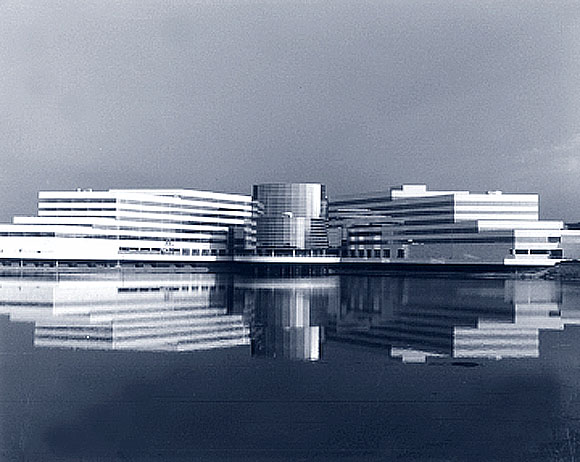
During the period from 1949 to 1979, the People’s Republic of China experienced thirty years of Communist Party rule. Everything was owned by the government, and everyone worked for the government. Chinese architects were isolated from the rest of the world during the Cultural Revolution, and architectural education was extremely narrowly focused. Upon graduation, everyone got the same salary, regardless of talent or commitment. Hard work and creativity were not rewarded.
In the last twenty years, the role of the architect has changed dramatically. During the 1980s, the door to the West opened up, and European and American architects began to visit. By the mid-’80s, some Americans began designing new and refreshing buildings that brought modern (Western) architecture to China. Among these architects was Leo S. Wou, with his firm, Wou & Partners.
Leo S. Wou was born in Tianjin, China, in 1927. He left China in 1947 to study architecture in the U.S. He graduated from the University of Pennsylvania and later worked for Louis Kahn. He also did graduate work at Yale and Cranbrook, immersing himself in the modern movement.
Wou returned to China for the first time in 1978. By the mid-’80s, his firm (known then as Ross/Wou International) began designing the Crystal Palace Hotel in Tianjin, China, overlooking a man-made lake. Across the lake was the traditional National Guest House, where Richard Nixon had stayed when he first opened the door for U.S. diplomatic relations with China.
In the mid-’80s, Chinese officials still demanded traditional architectural motifs. In fact, high-rise buildings in Beijing were required to have traditional sloping roofs, totally out of character with the rest of the building. Over time and with greater exposure, this situation began to change.
Wou’s design approach contrasts with I.M. Pei’s concept for the Fragrant Hill Hotel outside Beijing, completed in 1982. Pei’s design emulated traditional Chinese architecture, using Chinese gardens and traditional window motifs. Wou’s approach for the Crystal Palace was to bring modern Western architecture to China. The parti is an L-shaped wedge cantilevered over the edge of the lake. A series of 45° setbacks culminates in a glazed atrium at the center. Beverly Russell, editor-in-chief of Interiors magazine wrote at the time,
The Crystal Palace Hotel offers a refreshing change from the haphazard medley of styles that characterize the new wave of Chinese architecture. From its sleek, white, seven-story structure to the furnishings in its understated, mauve and pink interior, the entire 350- room hotel is uncompromisingly modern.
Leo S. Wou was highly respected by Chinese government officials, and students of architecture in China visited The Crystal Palace Hotel to study modern architecture and detailing. The Crystal Palace Hotel opened in Tianjin at about the same time as the Great Wall Hotel, designed by Welton Beckett, opened in Beijing. Both represented the entry of the modern movement into Chinese architecture. In the years since, China has continued to open up to Western architectural ideas, and talented, hardworking architects are respected—and rewarded with success.
Authors Michael Franklin Ross, AIA, and Deeing Chu, AIA, are principal-in-charge and a principal, respectively, of HGA/Los Angeles. Mr. Ross was previously president of Wou & Partners and Ross/Wou International, which merged with HGA Architects in January 2002. He has over 30 years experience in leading design teams on major projects. His Asia experience includes serving on the faculty at Tokyo University as a Fulbright Scholar. Ms. Chu was previously a partner of Wou & Partners. She has 15 years experience in China and 20 in the United States. She has led design and management on major projects in China, including the 350- room Crystal Palace Hotel, the 870,000 s.f. Tianjin Evening News Tower, and the Meijiang Community Center.
Originally published 2nd quarter 2003, in arcCA 03.2, “Global Practice.”





